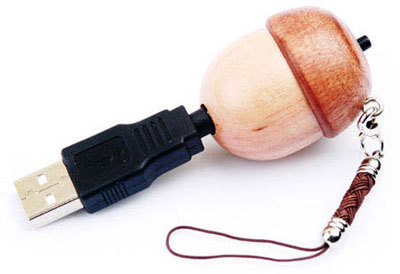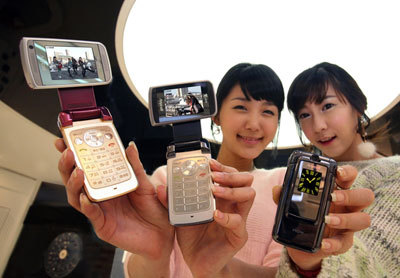Tag: Korea
Microsoft on viruses and malware: It's not our fault, guv.
Turns out that the vast majority of virus attacks are against badly-written third-party software, rather than Windows itself. So claims Microsoft, anyway, in the graph to the right. In XP, 58% of attacks target third party software, and in Vista, 94% target third-parties. The most popular targets are Apple’s Quicktime, Realplayer and Winzip.
When you drill down to the top ten browser vulnerabilities, Microsoft admit that they account for half of the biggest flaws on XP, including by far the top one, but on Vista, they don’t feature in the top ten at all – the number one place goes to a bit of software called Baofeng, which I suspect is a toolbar of some sort…
Mimo 7" LCD screens – a little bit of screen, for a little bit of cash
I’m a big fan of multi-monitor setups. Although they look a little ridiculous, they really do enhance your productivity no end. At the moment, though, adding another monitor can be tough. Unless you’ve got a bad-ass graphics card, it usually requires the installation of a new one, then you’ve got to mess about with drivers, and OH it’s all so complicated…
Eee PC's global success story – next stop: Japan
 It’s small, it’s portable, you can hack the hell out of it and even replace its cool Linux build with Vista – and soon the Japanese will have to chance to get their hands on Asus’ star portable blogging station.
It’s small, it’s portable, you can hack the hell out of it and even replace its cool Linux build with Vista – and soon the Japanese will have to chance to get their hands on Asus’ star portable blogging station.
Coming to Japan in February of 2008, working the poor old Asus manufacturing facility is about to get one hell of a lot harder…
LG aims for the girls with the 'Shining Stone UP3 S2' USB MP3 player
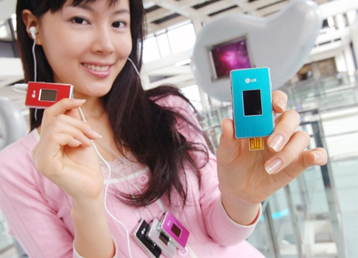
LG has continued its assault on the iMarket, by launching a ‘concept’ MP3 player, the ‘Shining Stone UP3 S2’. Hmm, I wonder what gender they’re targeting with a name like that?
Available in black diamond, crystal silver, ruby red, pink topaz and sapphire blue, they have inbuilt flash memory capacities of either 1GB, 2GB and 4GB, and supports a whole host of formats, including MP3, WMA, OGG, and ASF. A couple of features they have over the iPod Nano are the ability…
The LG Shine Wood will cause many pants-tents when it launches in Korea
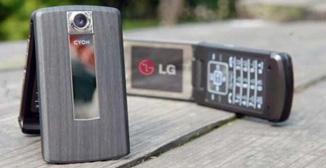
Got wood? Err, no, I’ve just got titanium black, actually. It’s the phone which will spark a thousand euphemisms, but unfortunately you’ll have to live in Korea in order to employ some clever double entendre, and obviously with the language difference, it wouldn’t work anyway.
The Wood (or LG-LB2500H for those with a memory unaffacted by constant model number remembering), isn’t actually made…
Korea/Japan Week: Five ways RFID is being used in mobile phones
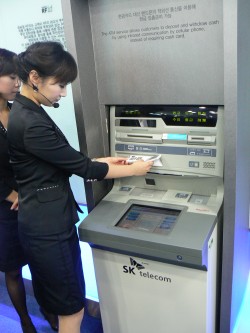 If there’s one thing I want to see in Korea and Japan, it’s people slapping their mobile phones down and Doing Stuff with them. You know, paying for shopping, getting cans out of vending machines. That kind of thing. A visit to Korean operator SK Telecom’s demo centre yesterday didn’t disappoint.
If there’s one thing I want to see in Korea and Japan, it’s people slapping their mobile phones down and Doing Stuff with them. You know, paying for shopping, getting cans out of vending machines. That kind of thing. A visit to Korean operator SK Telecom’s demo centre yesterday didn’t disappoint.
They were showing some of the applications for RFID technology, and it made for an interesting selection. Starting with…
1. RFID Banking (left). Go up to an ATM, hold your phone against the special sensor, and receive cash and/or a statement without a debit card in sight. Apparently more than one million people are using the service in Korea now, paying a monthly fee for it.
Korea/Japan Week: Day One Roundup
Today I’ve posted about ten cool things on show at Samsung’s Anycall store, shot a video of its fun touchscreen-based phone recommender, and wondered why removable fascias are enjoying a new lease of life.
I’ve also looked at the problems of DMB mobile digital TV here in Korea, heard that video-calling is just as unpopular as in the West, discovered how you can feed your pet dog or cat via mobile, and shivered at the prospect of The Victim, a musical seemingly influenced by survival horror games like Silent Hill and Manhunt.
Korea/Japan Week: The problem with DMB mobile digital TV…
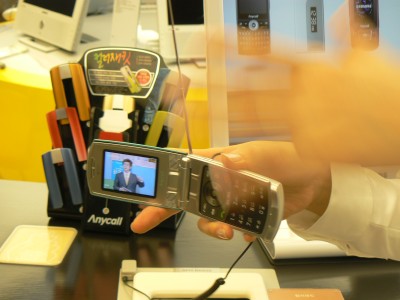
Us Westerners know that South Korea is ahead of us in terms of mobile technology, but we often assume that everything that’s launched there is successful, simply because it’s innovative. It appears that’s not always the case though, with DMB a prime example.
It’s digital mobile TV, comparable to having a Freeview or Sky receiver in your mobile phone in the UK, rather than watching streaming TV over your 3G connection. S-DMB (satellite) and T-DMB (terrestrial) have been available in Korea since 2005, but both have encountered problems which are less to do with the technology, and more to do with how they actually make money.









